About the vannamei, it can be said that it is a rather storyful shrimp.
The vannamei is native to the coast of Ecuador and other countries in Central America. It has been rapidly spread around the world due to its high meat yield, short growth cycle, low initial disease and high reproductive rate. At present, China, India, Malaysia, Vietnam, the United States and other countries have a large aquaculture area. The most concentrated breeding area in China is Zhanjiang, Guangdong. All coastal provinces are farmed. Due to the upgrade of domestic consumption in recent years, the demand for vannamei in South America has soared. However, due to environmental and extreme weather conditions, the disease has been raging, resulting in less than 10% of the success rate of P. vannamei since 2015. Most of them were symptoms of white stools, stealing, red whiskers, and jejunum empty stomach in the so-called "transfer liver stage" about one month after the seedlings were planted. The farmers were forced to clear the pond. Greatly hit the self-confidence of farmers. A large number of farmers have empty ponds or to breed species of prawn or California cricket. As a result, the price of the penguin of South American vannamei increased linearly in the second half of the year. A large number of post-entrants are rushing into the market under the influence of interests. Without technical support and relatively scientific management, the cases of investment failure are all. However, after all, there is a very strong demand in the consumer market. At the same time that some people have withdrawn, some people have joined in and succeeded. The industry's discussion on the culture mode of vannamei in South America has attracted the participation of shrimp farmers, seedlings, pharmaceutical companies, fishery experts, feed enterprises, equipment suppliers and other relevant people. A wave of technical discussions has been launched.
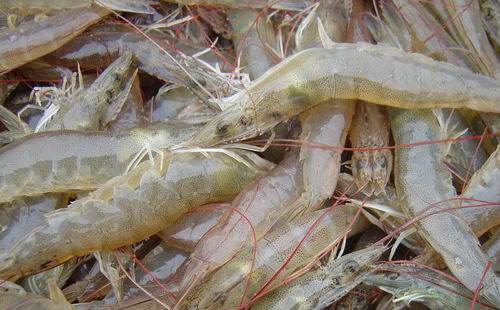 Guangzhou Lanling Water Treatment Equipment Co., Ltd. is the earliest factory in China to produce equipment for industrial aquaculture systems. Ten years ago, it was strategically predicted that the cyclical decline of vannamei farming in South America and the tightening of national environmental protection policies. It also has an intersection with most well-known aquaculture companies, nurseries and technicians in the industry. In terms of vannamei culture in South America, we have summarized the following conclusions: What are the main reasons for the extremely low success rate of vannamei culture in South America:
1. Water quality factors.
The “Harvest depends on the weather” model of earthen pond culture is susceptible to external factors such as typhoon, heavy rain, cold wave and water pollution. The water quality changes rapidly under the weather or water pollution. Lead to shrimp stress, red body or white stool. In addition, in large-scale farming areas, all farmers are polluted to the surrounding river beaches or sea areas, resulting in serious pollution of underground new water. The newly drawn water ammonia nitrogen and nitrite have exceeded the standard. Such water will cause the resistance of P. vannamei to decrease, and the feeding will be reduced. When the water quality suddenly changes, the shrimp will have a large number of stress deaths.
2. Seed factors.
Guangzhou Lanling Water Treatment Equipment Co., Ltd. is the earliest factory in China to produce equipment for industrial aquaculture systems. Ten years ago, it was strategically predicted that the cyclical decline of vannamei farming in South America and the tightening of national environmental protection policies. It also has an intersection with most well-known aquaculture companies, nurseries and technicians in the industry. In terms of vannamei culture in South America, we have summarized the following conclusions: What are the main reasons for the extremely low success rate of vannamei culture in South America:
1. Water quality factors.
The “Harvest depends on the weather” model of earthen pond culture is susceptible to external factors such as typhoon, heavy rain, cold wave and water pollution. The water quality changes rapidly under the weather or water pollution. Lead to shrimp stress, red body or white stool. In addition, in large-scale farming areas, all farmers are polluted to the surrounding river beaches or sea areas, resulting in serious pollution of underground new water. The newly drawn water ammonia nitrogen and nitrite have exceeded the standard. Such water will cause the resistance of P. vannamei to decrease, and the feeding will be reduced. When the water quality suddenly changes, the shrimp will have a large number of stress deaths.
2. Seed factors.
According to experts in the first line of aquatic products, the important reason for the low success rate of white prawn culture in South America is related to the broodstock carrying EMS virus, iridescent virus, peach virus, Vibrio cholerae and other microorganisms. The source of the shrimps from the source is fragile and the incidence is high. Because most germplasm resources are in the hands of large foreign agricultural giants, domestic seedlings are restricted by their monopoly, and their autonomy is rather poor. The first generation of seedlings is in short supply, so there is a part of the small seedling field, with the second generation seedlings posing as a generation of seedlings. The seedlings have not been fully hybridized and optimized, and the incidence rate rises after a period of breeding, resulting in failure of breeding.
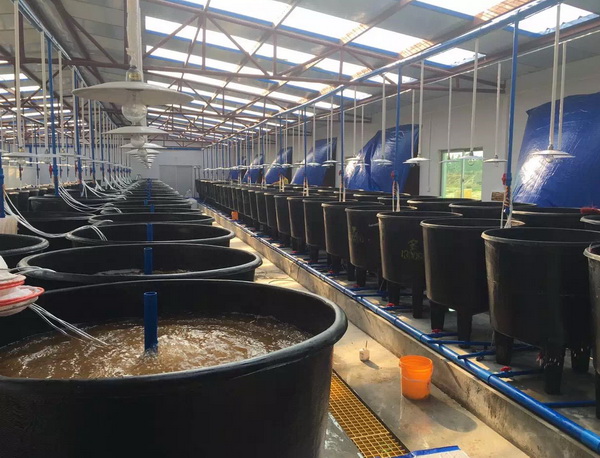
3.The shirmp food
The people eat food along the sky, and the shrimps do the same. However, it is reported that the beverages in many domestic feed factories are not honest in the production process and production formula, resulting in the whitening of the vannamei and the hepatopancreas atrophy in the middle of the breeding period. According to a customer of Blue Ling Company who has cultivated P. vannamei for more than 20 years, more than 70% of the domestic white prawn feed in China does not contain fishmeal! If this is true, it is not difficult to imagine that the adulteration of the feed industry is endless, and the South American vannamei industry is weak!
4.Management factors
The so-called shrimp raising water first. Water treatment has always been a top priority for aquaculture. In the absence of good water quality, the risk of farming will rise sharply. So how to deal with water is a key step in the success of shrimp farming. Water treatment targets for aquaculture are nothing more than temperature, dissolved oxygen, pH, ammonia nitrogen, nitrite, phosphate, hydrogen sulfide, etc. Therefore, the correct detection of these indicators, the effective prevention of water quality changes, should be standardized management. This poses a challenge to the quality of farm managers. Some customers once saw the pH of the culture pond exceeded the standard, and directly put a lot of quicklime in an attempt to lower the pH value of the water, but immediately caused a large number of floating heads of P. vannamei. They are all excessive measures taken because they have not adopted Aquaculture technology. Preventing disease before it is the essence of aquaculture management.
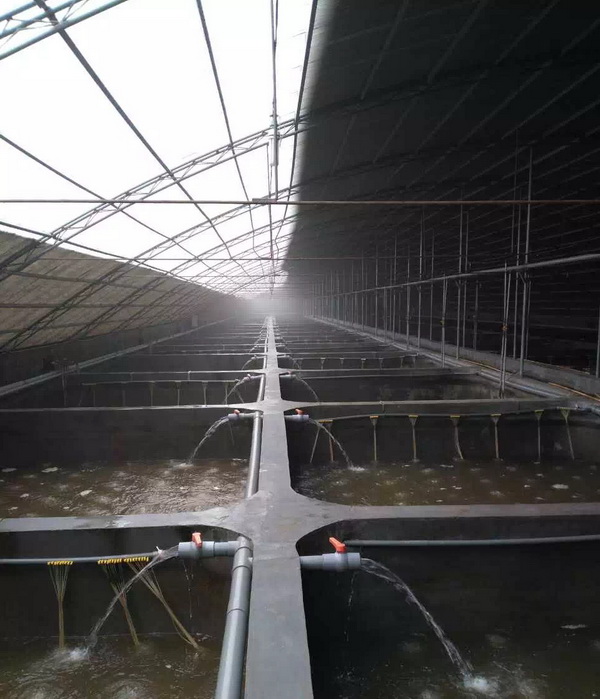
5. Other human factors
In many industries in China, there is always a lot of eagerness and quick success. Shrimp feeding only 70% full, seems to be just a childish and ridiculous word. It seems that you can raise ten pounds of shrimp. Some people only raise seven pounds, which is a fool who doesn't know the current affairs. I don't know, risks and benefits are always proportional. When people's pursuit of yields is crazy, that is, farming failure becomes an inevitable time.
In addition to the above human factors. Counterfeit drugs, fake biological agents, etc. are also a major culprit in soil pond farming. People try again and again, but it is difficult to find quality products. The manufacturers’ indiscriminate bombing and advertising campaigns have made the shrimp farmers dazzled and confused.
At present, a lot of extensive discussions have been held on the culture mode of vannamei in South America. It can be roughly divided into factory aquaculture mode and biofloc mode. The case of successful biofloc culture mode in domestic breeding is relatively rare. By probiotics and corresponding nutrients are regularly applied to the water body every day, the probiotic seedlings are multiplied in water to squeeze the living space of harmful microorganisms. Achieve the goal of reducing the disease of P. vannamei. However, in this mode, ammonia nitrogen and nitrite remain at a high concentration, and once inadvertently operated, it will cause poisoning of P. vannamei. Therefore, this model requires higher professional quality of managers.
The complete cycle of aquaculture mode, because the initial investment is higher, the return period is longer. There are currently few cases in China. However, with the tightening of environmental protection policies, the disorderly discharge of aquatic sewage will be punished. Therefore, the technical requirements are not high, and the more grounded gas factory farming mode is the most feasible mode.
The industrialized recirculating aquaculture model utilizes mechanical filtration equipment, biological treatment equipment, constant temperature equipment, aeration equipment, and water quality testing equipment. The feces of fish and shrimp are separated from the water body for the first time, and then the probiotic bacteria are cultured in a directed manner by biochemical cultivation technology, so that harmful substances such as ammonia nitrogen and nitrite in the water are converted into non-toxic substances. Together with the current water product networking technology, remote monitoring and full automation can be realized. The system consists of the following:
Mechanical filtration: A fully automatic drum microfilter and bag filter are recommended. The microfilter can remove the filtered large-particle solid suspension from the water for the first time without destroying the original state of the fish and shrimp manure. Therefore, more than 90% of the suspended solids can be removed after passing through the microfilter. Bag filters are a must for their high filtration accuracy. Its nylon strainer can reach 30 microns. Fine particles are filtered out.

Biochemical filtration: generally in the form of biochemical pool. The biochemical pool is filled with a large amount of bio-filler, while aerating and activating oxygen. When the temperature, dissolved oxygen value, and pH are all in compliance, a large number of probiotics such as Bacillus, lactic acid bacteria, nitrifying bacteria, yeast, denitrifying bacteria, etc., will multiply. And hang the membrane on the biofiller. They can convert harmful substances such as ammonia nitrogen, nitrite and hydrogen sulfide in water into gas or harmless substances to escape from water. So that the fish and shrimp are in a safe water environment.
Oxygenation equipment: It can be a fan, a high pressure air pump, etc. However, in the case of seawater, the oxygenation effect of the jet is better. However, in most cases, bubbles escape quickly from the water, resulting in a large amount of wasted power. After years of research and development, Lanling has a new pure oxygen aerator that uses oxygen to oxygenate the water without bubbles from the water. Not only does it improve the efficiency of dissolved oxygen, but it also avoids a lot of pure oxygen being wasted.
Sterilization system: Common sterilization equipment is ozone generator and ultraviolet sterilizer. The ozone gas generated by the ozone generator has a strong sterilization effect. But its residue in circulating water can also kill the beneficial bacteria in the biological filtration system. Therefore, in recirculating aquaculture, we use a UV sterilizer as a sterilizer. The ozone generator is used in the reservoir. The raw water is sterilized and aerated.
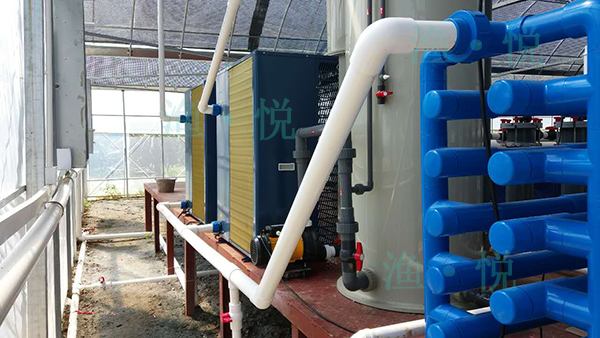
Sedimentation tank: When the site is large enough, we can increase the system sedimentation tank. The manure of the fish and shrimp is separated in the sedimentation tank in the first step. To reduce the load on subsequent devices.
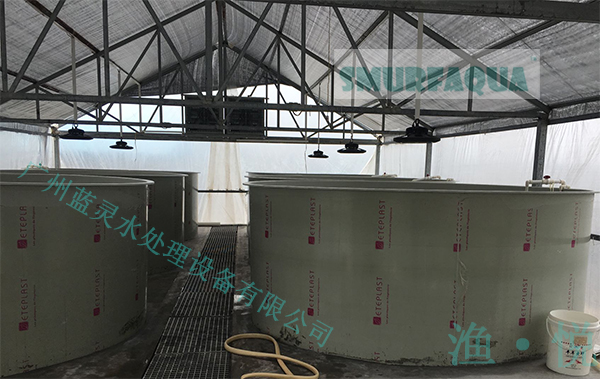
Reservoir: The reservoir can be used not only as a treatment tank for raw water treatment, but also as a source of water for water when the water quality is near the critical point. Can significantly reduce the risk of the system.
The water in the reservoir is filtered and sterilized by means of protein skimmer:
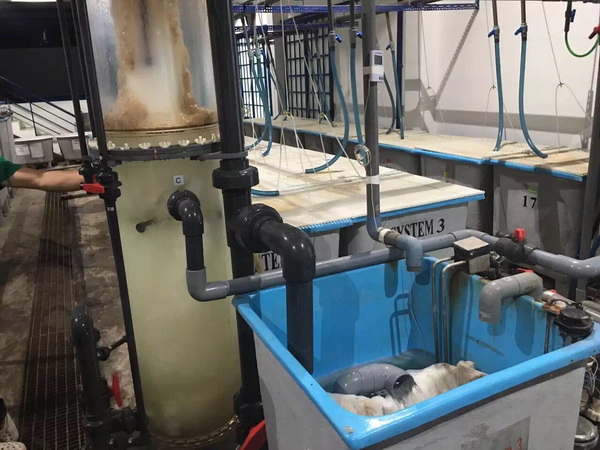
Thermostats: The most widely used are air-energy heat pumps and chillers. However, it should be noted that the building should be equipped with appropriate lighting and insulation measures when it is built.
The above systems need to be calculated based on specific breeding density, water exchange rate and other data. Different farming densities and water exchange rates, the configuration of the equipment is also different.
In addition to the above industrialized circulating water system, we should also note that if all the above system equipment is used in P. vannamei, the cost is too high. Therefore, we mainly promote a semi-circulating aquaculture mode, or call it HRAS mode. That is, within about 30 days of the early stage of shrimp culture, it is not cultured in the soil pond, but is carried out in a smaller pond. The water in the standard coarse tank is recycled by a circulating water treatment system. When the shrimps pass the “transfer period” safely, the fresh shrimps are transferred to the pond for breeding. This minimizes the cost of system equipment and reduces the overall risk of farming.






